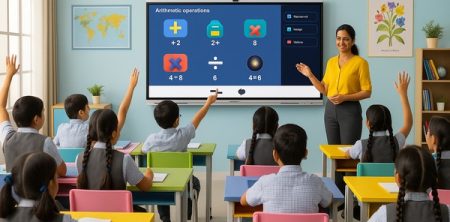The portrayal of the teacher figure in popular media significantly influences how children perceive educational authority and the learning process itself. Particularly influential are the teacher characters featured in kids animated shows, where educators often appear as mentors, guides, and sometimes even magical figures who inspire and transform their fictional students. These animated representations create powerful archetypes that shape young viewers’ expectations and attitudes toward their real-life educational experiences.
Animated teacher characters typically fall along a spectrum of archetypes, each communicating different messages about the educational process. From the stern disciplinarian to the magical mentor, from the bumbling comic relief to the passionate inspirational figure, these diverse representations offer children varied models of what teaching looks like. The most effective animated teachers often combine elements of multiple archetypes, presenting nuanced characters that reflect the complexity of real educational relationships.
Research in media psychology suggests that these fictional representations can significantly impact students’ preconceptions about school environments. Young children who have yet to enter formal education often form their initial impressions of teachers and classrooms through animated content they consume. These early impressions create mental frameworks that influence how children interpret their subsequent real-world educational experiences, potentially affecting everything from their comfort level in the classroom to their willingness to engage with instructional activities.
The imaginative possibilities of animation allow for exaggerated teaching scenarios that nevertheless communicate authentic educational values. When animated teachers demonstrate extraordinary patience, creative problem-solving, or unwavering belief in their students’ potential, they model ideals that real educators strive toward. Though the magical elements may be fantastical, the underlying messages about educational relationships often contain significant truth value that resonates with young viewers.
Cultural diversity in animated teacher representation has increased significantly in recent decades, reflecting broader societal emphasis on inclusive representation. Modern animated programming increasingly features teacher characters from various cultural backgrounds, gender identities, and ability levels. This diversity helps children develop broader conceptions of who can be an educational authority figure while providing representation that allows diverse students to see themselves reflected in prestigious roles.
The classroom management styles portrayed in animated shows communicate powerful messages about authority and agency in educational settings. Programs targeting younger children often feature teachers who maintain gentle but clear boundaries, while content for older viewers might explore more complex power dynamics between teachers and students. These portrayals influence children’s expectations regarding appropriate behavior in learning environments and their understanding of student-teacher relationships.
Subject specialization represents another interesting aspect of animated teacher characterization. Often, animated teachers demonstrate particular passion and expertise in specific academic areas, from science and mathematics to literature and art. These characterizations can help counteract subject-based stereotypes and inspire interest in areas children might otherwise dismiss. When a beloved animated character demonstrates enthusiasm for a subject, children often develop increased curiosity about that field.
Behind-the-scenes educational consultants frequently influence the development of animated teacher characters. Many production companies employ educators and child development experts to ensure that their depictions of teaching and learning environments incorporate sound educational principles. This collaboration between entertainment creators and educational professionals helps ensure that animated content, while primarily entertaining, also communicates constructive messages about learning processes.
Parental mediation plays a crucial role in how children interpret animated teacher portrayals. When parents and caregivers discuss animated content with children, highlighting positive educational values while contextualizing less realistic elements, they help young viewers develop media literacy skills. These conversations allow children to appreciate entertaining animated teachers while developing realistic expectations about their actual educational experiences.
Longitudinal impacts of animated teacher representations remain an evolving research area. Preliminary studies suggest that positive portrayals of educators in children’s media correlate with more optimistic attitudes toward school and learning. These findings underscore the importance of thoughtful teacher representation in animated programming, particularly for children from backgrounds where positive educational role models might be limited in their immediate environment.
The evolution of animated teacher characters over decades reflects changing educational philosophies and societal values. Earlier animated programs often featured more authoritarian teacher figures, while contemporary shows typically emphasize collaborative learning relationships and student-centered approaches. This shift parallels real-world developments in educational theory and practice, demonstrating the interconnectedness of media representation and social evolution.
Critical viewing skills become essential as children mature and begin analyzing the media they consume. Effective educators help students recognize both the inspirational potential and the limitations of animated teacher portrayals. These discussions encourage children to appreciate positive fictional representations while understanding the complex realities of actual educational environments where magical solutions are unavailable but meaningful learning still occurs daily.

